In the SEO world, finding high-quality backlinks is like finding a €20 bill on the street. They are scarce and difficult to spot at first glance. You might even be convinced that a link is high quality, only to find out it has no added value for your page.
We’ve already talked about how to find contextually relevant link opportunities and how to build contextual links. But what does a high-quality backlink look like? Isn’t quality subjective? And is pursuing relevancy or authority the best link building strategy?
If you’re unsure how to test backlink quality, how they contribute to your results on SERPs, or how to get high-quality backlinks the right way—you’ve come to the right place.
What is Link Building all about?
First, let’s establish the basics.
Backlinks are one of the most essential components of Google’s ranking factors. Even though their ranking criteria are usually cloaked in mystery, Google admitted that links, content, and RankBrain are their top 3 ranking factors.
Backlinks act as an endorsement for search engines, showing what content is trustable and has value for users. A backlink is created when one domain links out to another. Links can also be inbound and connect users to another piece of owned content or landing page that relates to their intent.
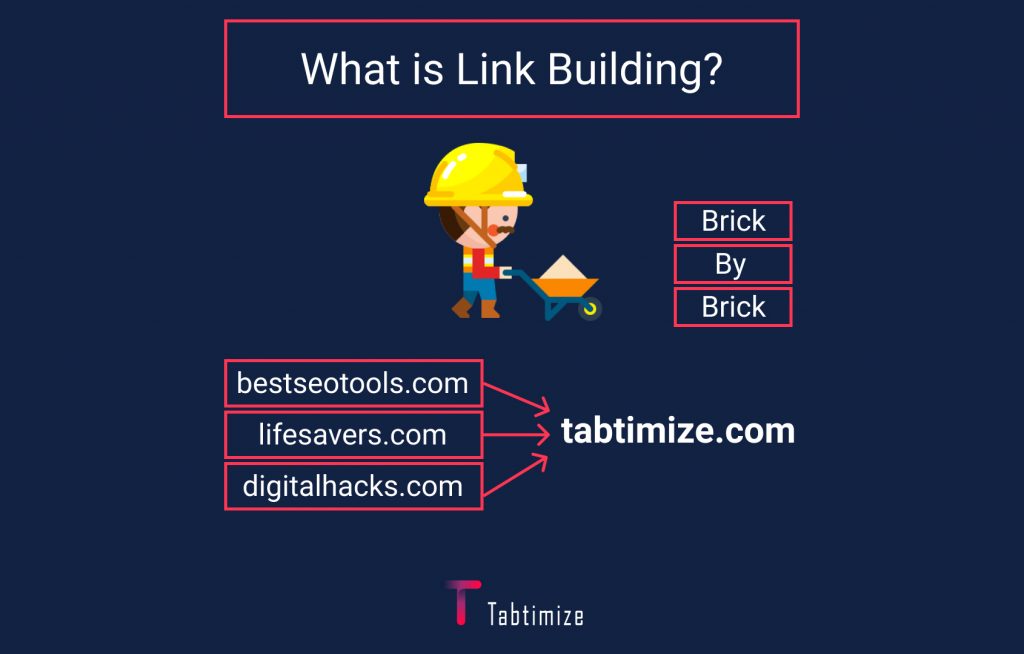
Trust, visibility, and relevance are the foundational elements of any link building and SEO strategy. Backlinks help to reinforce these objectives by linking out to internal or external sources that enhance the online experience of users. Building backlinks can significantly impact your search performance, whether it’s positive or negative depends on the methods you choose to build them.
Types of backlinks
Follow vs. NoFollow Links:
There’s only one technical difference between these two links, but their impact on SEO is vastly different. All no-follow links contain the rel=”nofollow” HTML Tag, while follow-links don’t. However, there are also two other forms of link identification, namely “ugc” and “sponsored”. These are previewed new and are not used to the extent of “nofollow”. Here’s an example of a follow vs a nofollow link:
This small piece of code tells Google not to crawl no-follow links, so they likely have no impact on PageRank. Conversely, follow-links impact your SEO, as they are indexed by Google, and can directly affect your rankings. Naturally, it makes sense that you’d want to have more follow links than no-follow ones, right?
But why do no-follow links exist in the first place if they don’t impact your website? The no-follow tag was created by Google to counteract spam in blog comments. In the earlier days of SEO, before multiple Google Algorithm updates, the internet was overrun with spam. It was easier for companies to gain traction and skyrocket rankings through shady practices. And as blogging took off, so did comment spam.
This posed a massive problem, as spam sites were growing exponentially and displacing high quality sites in rankings. Since the no-follow tag was introduced in 2005, other search engines have also followed suit—and today most major media and social media platforms use No Follow tags in their outbound links.
Natural Editorial Links:
These are the unicorns of link building. They are hard to find and even harder to build. They typically will occur when a site has achieved substantial domain authority or visibility by the right audience(s). These occur when other websites link out to your content without you having to ask for a link from them. To have natural editorial links, you must create highly relevant, top-quality content and circulate it to influential websites or bloggers. If they pick it up and share your content, it will (eventually) result in other large-scale bloggers doing the same. This could mean a significant jump in your rankings, visibility, and popularity.
Contextually Relevant Links:
Google loves contextually relevant links. They are inbound or outbound links that are found within the main content of the text. They are always placed naturally within a paragraph or heading and link to only topically relevant content. They aren’t stuffed with keywords and use natural anchor text. These types of links hold a higher weight with Google as they show the search engine that your content isn’t spam and most importantly is relevant for the readers. A winning combination! Like editorial links, they can be difficult to build and require time, but once scaled can provide stellar results for your SEO efforts. The only caveat here is that assessing relevance accurately in scale requires the use of AI and semantic understanding capabilities, which very few third-party providers possess**. But building contextually relevant links are more attainable and provide more sustainable results than relying on getting links from authority sites alone.
**The Tabtimize platform is the only link building software on the market that has this capability.
Bought Links:
Buying links is bad, and we can explain why. While it may be tempting to take the Black-hat route for SEO results, we would never recommend it. Dabbling in Black hat SEO has more risks than benefits. As a general rule of thumb, if you can buy a bunch of links in bulk for a low price, they are virtually useless. Google hates sites that buy backlinks, as it violates Google’s Webmaster Guidelines. Buying random links from link farms or FFA sites can lead your site down a slippery slope, by placing your brand next to shady sites that could hurt your reputation. Once that happens to you, it’s near impossible to dig yourself out of that hole. Believe us, a few companies have tried and been caught in public SEO scandals. Remember, the quality of links always wins over quantity!
How to recognize a high-quality Backlink
We’ve said this before, and we’ll say it again, all links are not created equal.
On the other hand, it’s also not as black-and-white as saying that all good links must come from high authority websites, or that all bad links come from low-quality pages, etc. Each scenario must be assessed critically, and using a third-party software to assess backlink quality can be very helpful. However, there are general characteristics that can help you identify which links can best amplify your SEO efforts.
Authority:
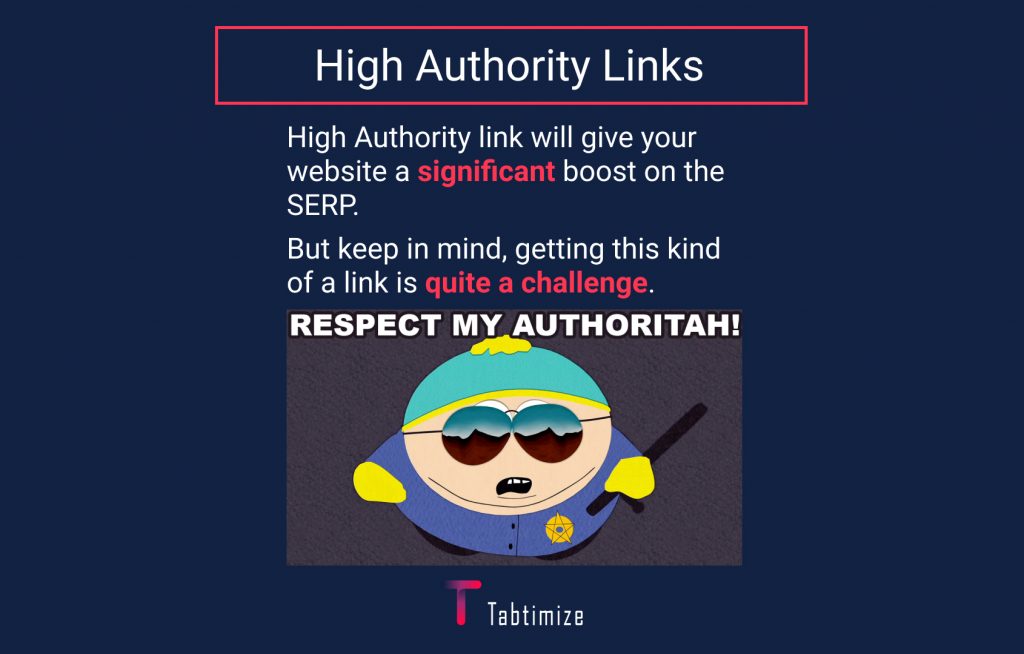
A link from a site with high authority can be an excellent way to achieve visibility in the SERPs, skyrocket your rankings, and help you build your own authority. Generally, if an authority website links to your content—it is saying that your content is adding value to your niche. Getting a link from an authoritative website provides a competitive advantage if it is difficult for your competitors to also get links from them. However, authority is only one part of the picture and It may play and a smaller role than the other three factors below.
Relevance:
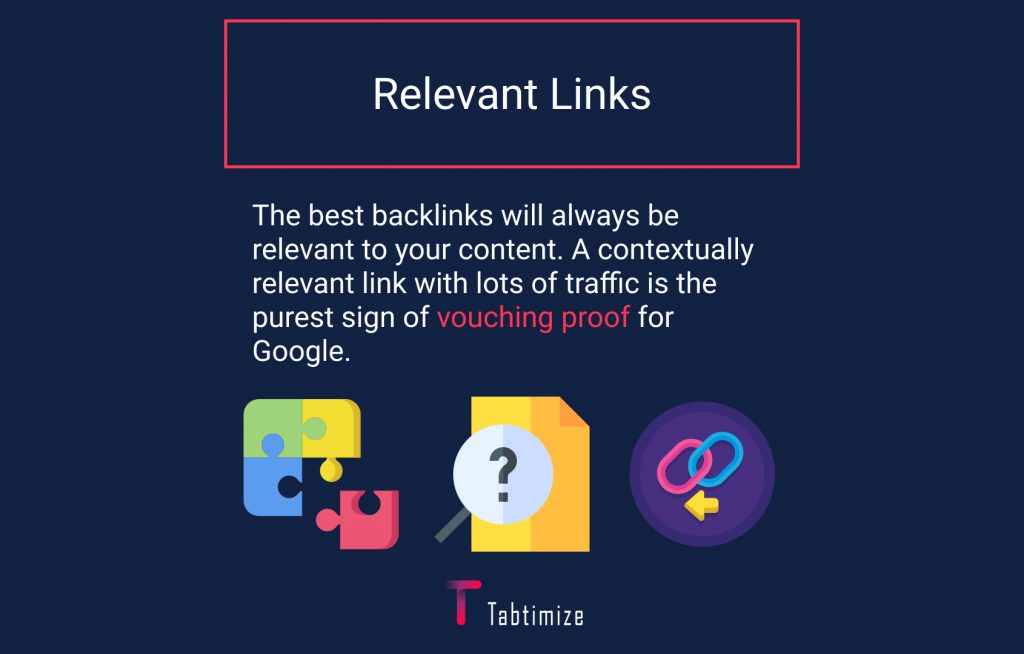
Relevance is one of the single most important factors for assessing backlink quality. Google zeroes in on relevance, giving higher weight to topically relevant sources over others. Without relevant backlinks, it’s impossible to increase visibility on the SERPs or even build your authority as relevant links communicate your trustworthiness to the search engines. While it would be mind-blowing to receive a backlink from CNN, Wikipedia or Forbes—if it’s not relevant, it won’t mean as much to Google.
Traffic:
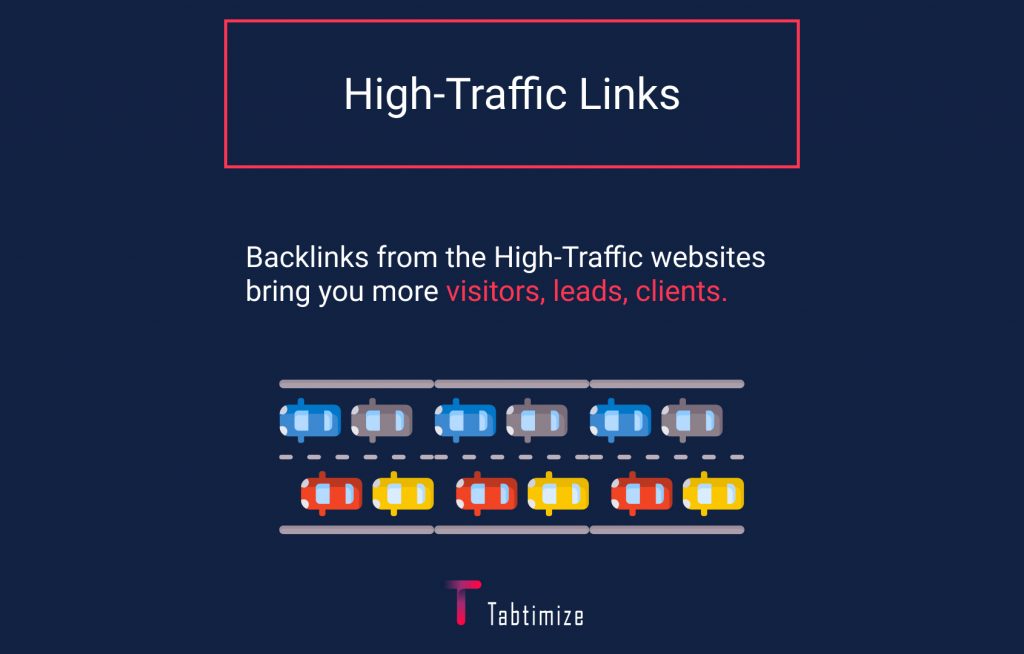
The traffic of the sites you link to and get links from also plays a pivotal role. Receiving links from a site with high-traffic will cause your site to also receive higher volumes of traffic and impressions if users click on the link. In the best-case scenario, this leads to conversions, with the worst case being higher impressions, potential leads, and increased brand awareness. So far, so good. But SEO Professionals can often overlook site-traffic, opting instead to chase links with high authority. This can be misleading, as a site can technically have high authority but low traffic. This does little for your visibility and rankings.
Content:
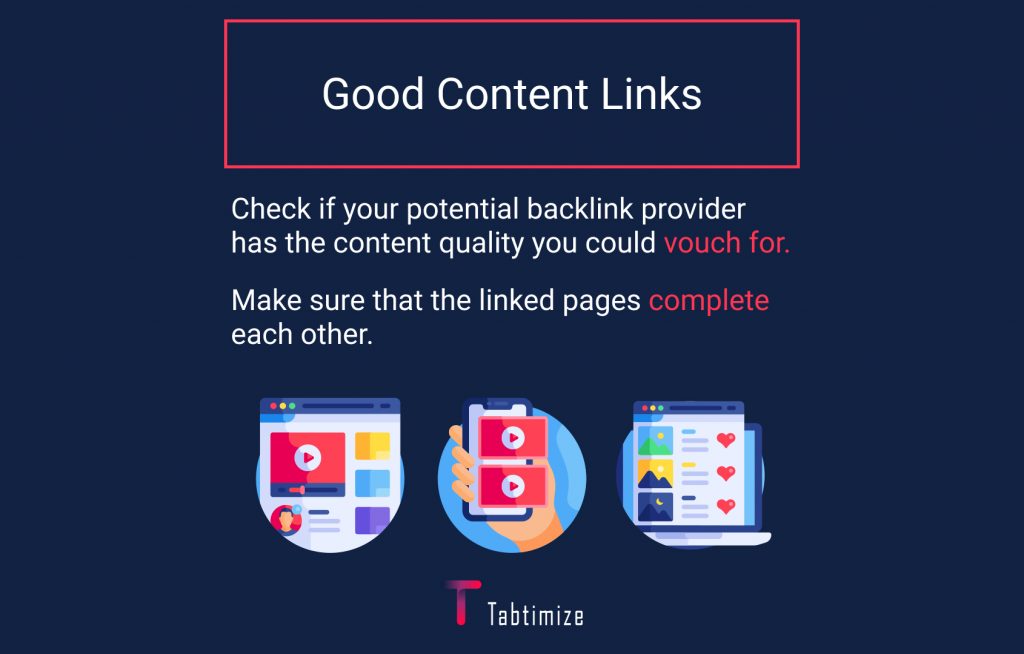
Take your time and go through the content of the websites you’d like to link to, or would accept links from. Assess the quality of their content with a critical eye. Is it any good? Will your users gain any value from them linking to you or vice versa? Linking to a website with engaging and relevant content will only enhance the user experience of your visitors. A big win for your users and SEO.
Use Software, but don’t get tunnel vision
If you’re serious about getting results, using software from third-party providers is one of the best ways to maximize your efforts. Irrespective of whether you have a high-budget, or are looking to earn high-quality backlinks free with trial programs, using software helps you get closer to your goals. The Tabtimize Link Prospecting tool, allows you to see only the most relevant link opportunities so you don’t waste time scouring the internet for qualified prospects and searching for content-fit. Other third-party providers also allow you to have a complete overview of SEO metrics that matter, like keyword exploration, content auditing, etc.
However, there are some things to be mindful of.
Relying only on a single metric alone can be can be misleading.
It’s easy to want to stick with a single tool or fixate on one metric, but this leads to an incomplete link-building strategy.
It’s important to approach link building holistically and incorporate and measure all the important metrics for best results.
Chasing only hard-to-get metrics such as authority can hinder the results you want, by limiting the link opportunities you have access to.
What resources can I use to make informed decisions?
It’s important to stay informed about the many updates from search engines so you can follow their guidelines, stick to industry best practices, and avoid harsh penalties. We recommend regularly checking:
Google Help: This is a great resource to get support on technical issues in real-time from users who are facing/ have faced the same problems as you. It’s also helpful for finding articles for troubleshooting technical problems.
Google Search Central Blog: This should be your go-to destination for the 411 on all Google algorithm updates, announcements of new features, and general SEO best practices.
Search Engine Journal: You can find the latest news in search, and many helpful guides and SEO how-to’s across multiple channels.
Tabtimize blog: Here at Tabtimize, we strive to bring you accurate and up-to-date information about SEO best practices through our video tutorials, how-to’s, case studies, and blogs. We also aim to be your information source on backlink building.
We’re all about full transparency throughout the link-building process with real sites with real traffic and would like to allow our site visitors the opportunity to try our tool as well. Building contextually relevant backlinks shouldn’t be a hassle, so if you’re interested in finding contextual relevant link prospects, register an account on Tabtimize right here.
Closing Comments
Google will naturally view you as a trustworthy and relevant source of information if you focus on building relevant backlinks, creating high-quality content, and improving user experience. It’s important to approach your link-building strategy holistically and use the most important metrics to give you a good overview of the big-picture. By building your strategy around user-centricity at its core, plus some patience and persistence, you’ll gradually see your rankings soar on SERPs.
What strategies have you used in the past to differentiate between good and bad links? Let me know if I’ve missed any in the comments below.



